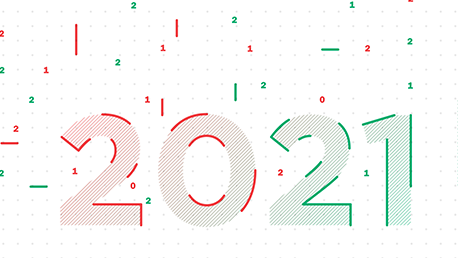The insurance industry is facing a Great Resignation as many of its most experienced professionals near retirement age. And since many younger professionals are not going into insurance, the knowledge and talent gap continues to grow. Here, we examine this critical topic and explore how AI may be able to help.
The "Great Resignation"
The insurance industry is facing what has become commonly known as “The Great Resignation” and its impact has the potential to be huge. According to United States Bureau of Labor statistics from 2021, the number of insurance professionals aged 55+ has increased by nearly 75 percent in the last 10 years. That means the industry could see more than half its current workforce retire over the next 15 years. And while that may not seem so bad on the surface, if we dig just a little deeper into what that means, the storm clouds on the horizon begin to take shape. Over the next 15 years, 50 percent of the current workforce will retire, creating 400,000 open positions across the industry. As I outlined in an earlier post, this labor imbalance is one of the key aspects of economic uncertainty the insurance industry must solve to remain successful in 2023 and beyond.
The knowledge gap
At the same time the older generation of insurance professionals are retiring, younger professionals have shown little interest in embarking upon insurance careers. Currently, less than 25 percent of the industry is under 35 years old. Couple this with the fact that retiring underwriters and claims handlers take invaluable institutional knowledge with them when they retire and insurers are facing a tremendous knowledge gap. Even when those open positions are filled, it typically takes more than eight months, and the equivalent of a full year’s claims adjuster's salary to initially onboard new employees. This is in addition to the years of experience it takes to develop the expertise of the long tenure professionals they are intended to replace.
Bridging the gap with artificial intelligence
It is critical to remember that the knowledge gap faced by insurers is not only about expertise, but also about efficiency and costs. It is not a secret that the cost of settling claims is going up. Inflation - both for goods and services and associated with wages - is simply making it more expensive to do business. Claims are also getting more frequent and more costly. Rising indemnity payments from weather disasters alone cost insurers $165B in 2022. So what can insurers do to ensure the professionals they do have working for them can settle claims with the efficiency, accuracy and fairness of those that came before?
One of the best ways to mitigate the knowledge gap created by a contingent of knowledgeable workers exiting the workforce is to capture their experience and expertise while they are still on payroll. Artificial intelligence (AI) is the perfect way to tap into the institutional knowledge they possess and replicate that experience and expertise at scale through the algorithms and models that drive AI-based solutions. Furthermore, embracing cutting edge technologies is one of the best ways to attract younger professionals who have typically viewed insurance as innovation averse.
AI and automation go hand in hand
The good news for insurers is that AI and automation go hand in hand. And while determining where this fits into your processes and procedure can seem daunting at first, getting an understanding what AI is capable of is the best place to start. For example, AI can be programmed to mimic senior underwriters & adjusters who can intuitively pick up fraud based on voice & text analytics, a skill which takes years to develop. AI can be used to spot incongruities and inconsistencies across the documents that support a policyholder’s claims. Although this is a skill that can be honed by sifting through thousands of documents, AI-based automation eliminates the highly manual, and if we are being completely honest, incredibly tedious aspects of this task. AI can augment the experienced personnel with the ability to assess the extent of bodily injuries based on police statements, witness statements, medical reports and other documentation, as well as quickly spot patterns - such as a claimant being treated by non-local providers who also happens to be treating other participants in the claim. And AI can mimic the experience an insurance professional may have developed to catalogue the rules of recovery (injury & collision) that differ from state to state, and takes years of experience to build. Automating tasks associated with these examples, among many others, is one of the most effective ways of transforming underwriting and claims to bridge the knowledge gap.
Conclusion
Insurers find themselves caught between a rock and a hard place, but they do not need to be. And while it is true that retirement is outpacing recruitment, there are a number of viable options for implementing programs to overcome the challenges faced, with AI-based automation at the top of the list. AI enables insurers to build operating models where a large percentage of policies and claims are processed without human intervention. This in turn frees employees to work on the most complex and interesting cases, augmented by AI-supported insurance decisions. With the right strategies and technology deployed, insurers can be well prepared to beat “The Great Resignation.”
For more information about how Shift can help you adopt AI to meet the economic challenges facing the insurance industry – contact us today


